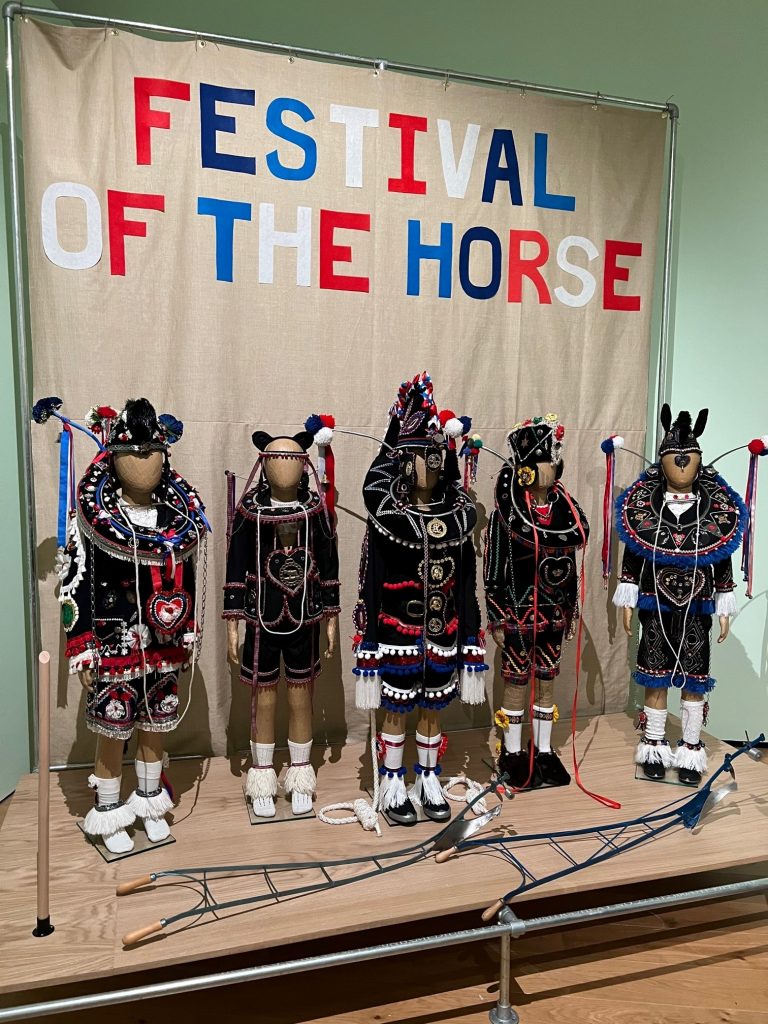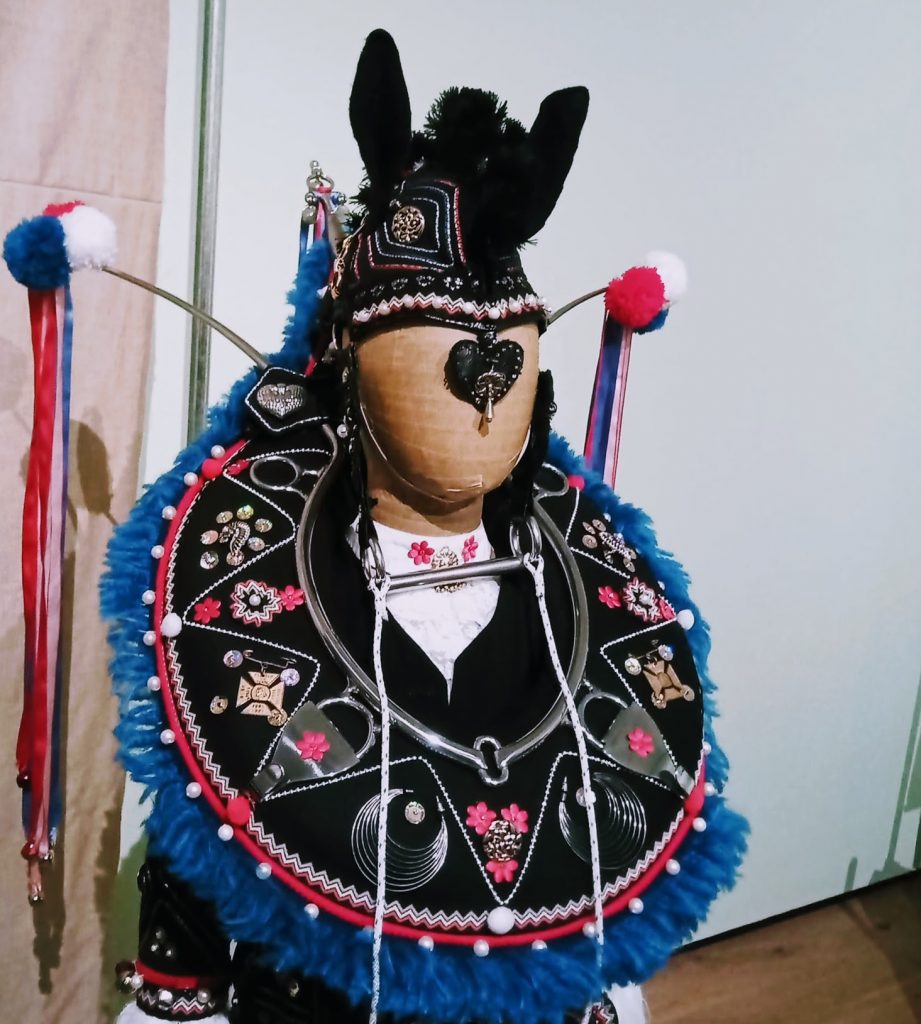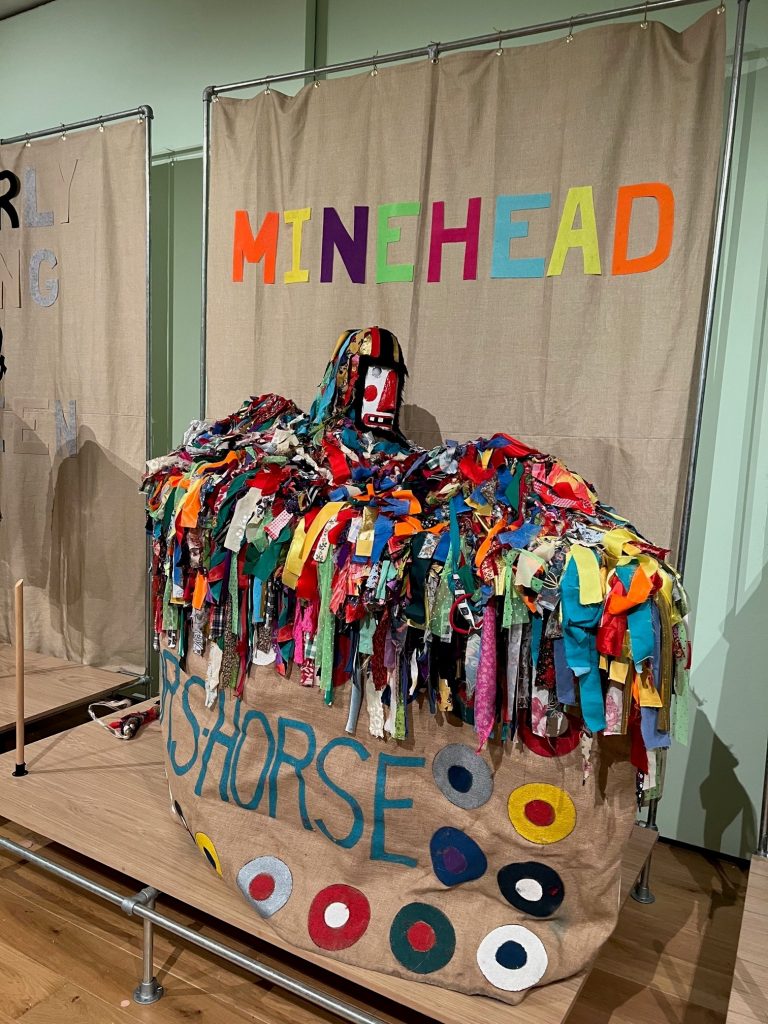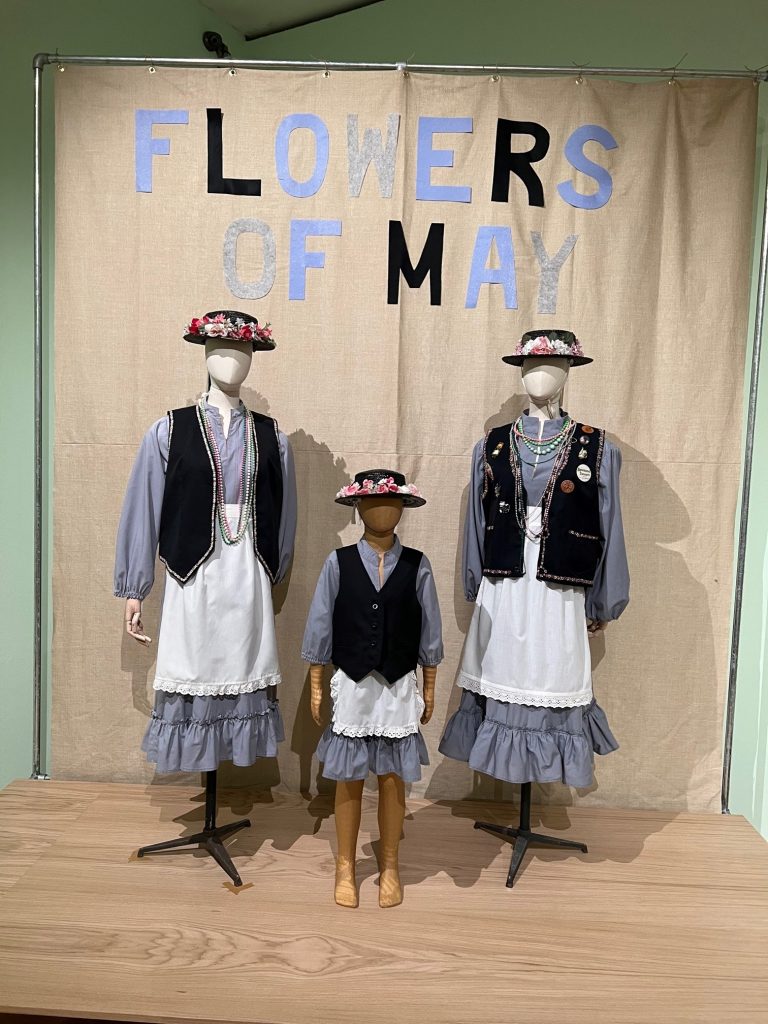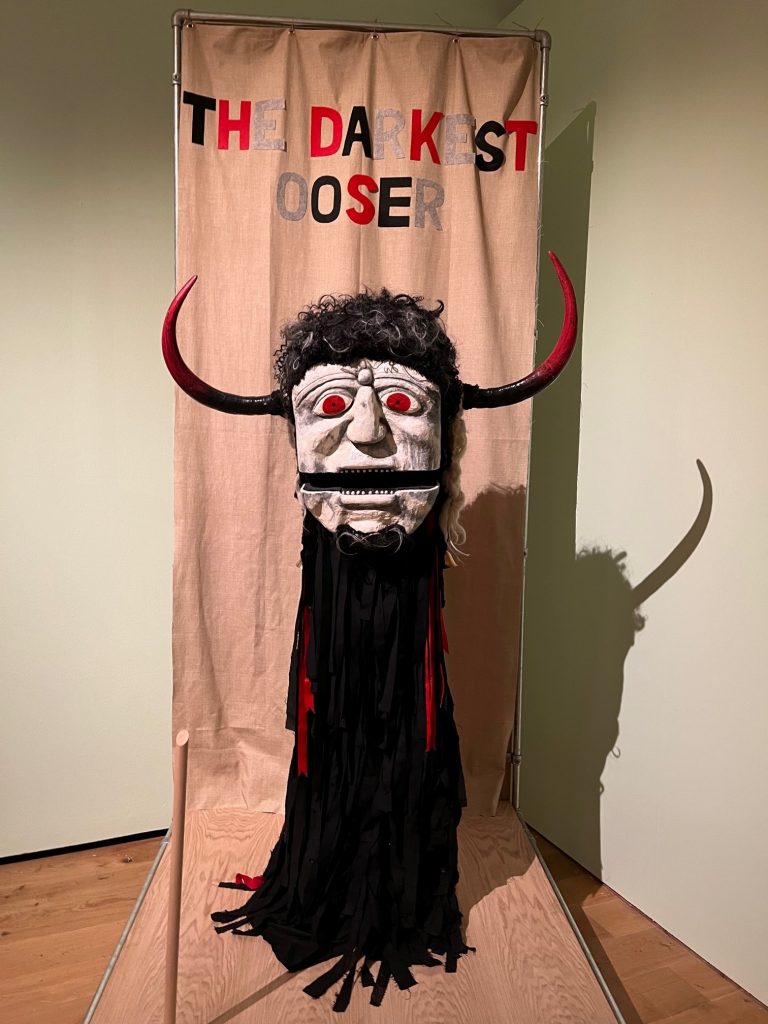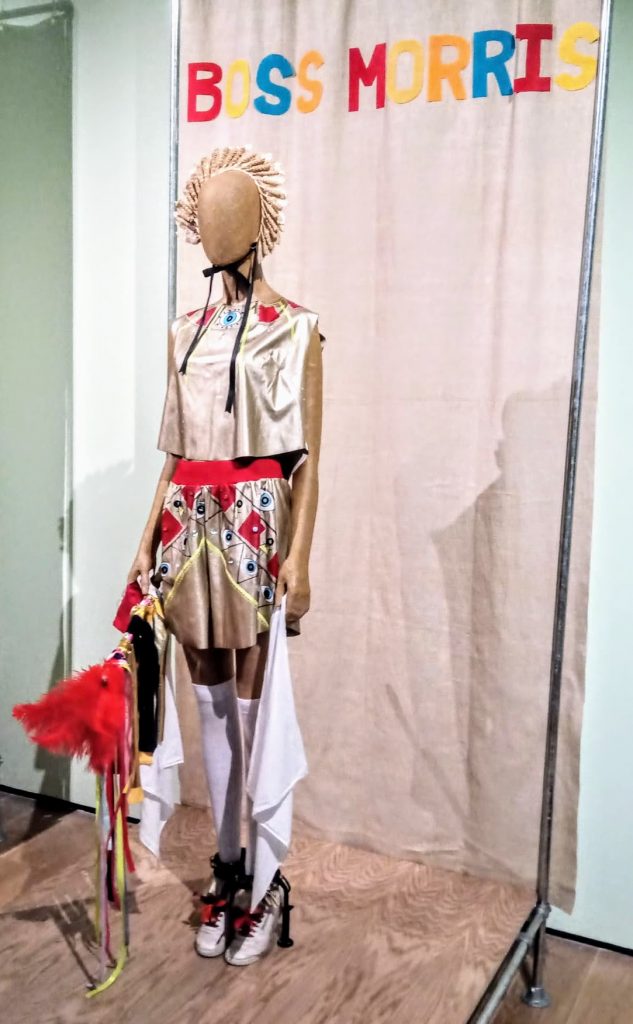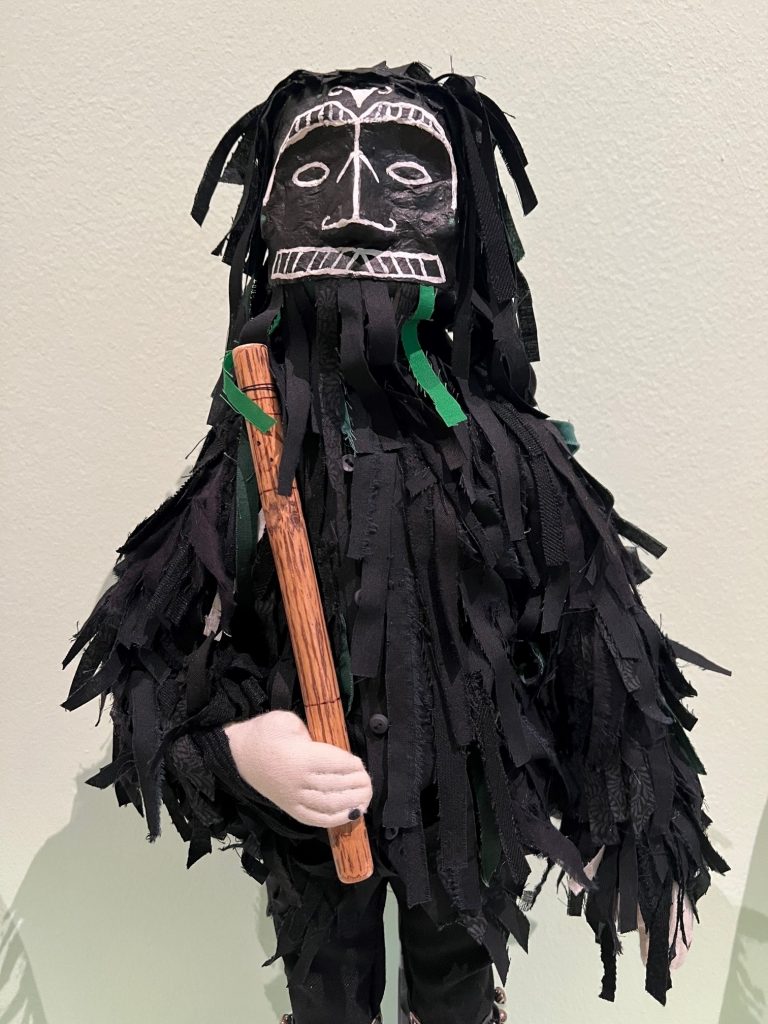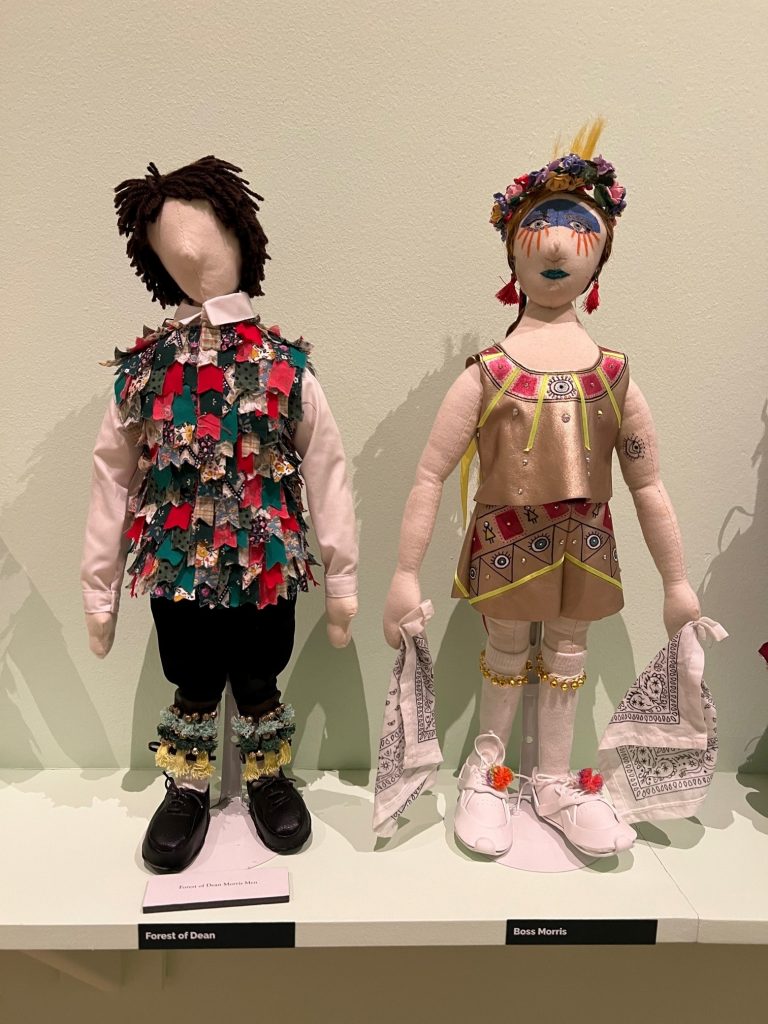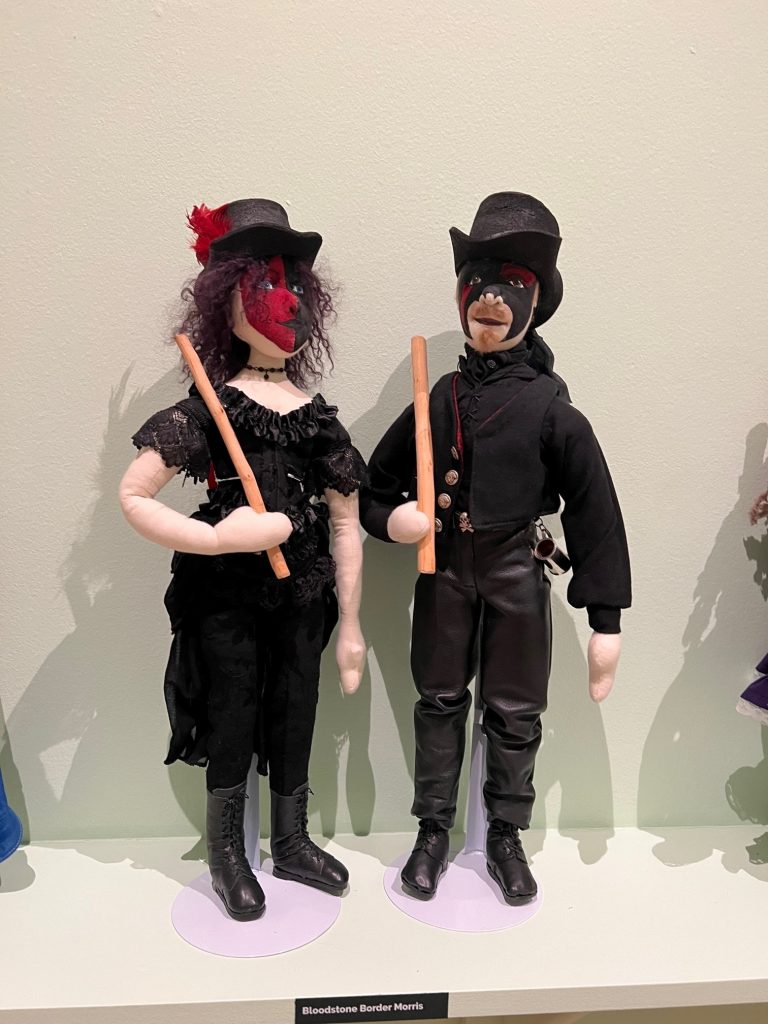Making Mischief: Folk Costume in Britain
Making Mischief: Folk Costume in Britain will be the first exhibition dedicated to the rich tapestry of folk customs found in the UK today. It will explore the central role played by costume in local and seasonal folk customs, bringing together over 40 costumes created, customised and worn by individual practitioners, many of which have never been exhibited before.
Making Mischief is both a celebration of grassroots traditions and a challenge to preconceptions about folk customs being fixed and nostalgic. It will highlight evolving practices such as the rise of all-female Morris groups and the inclusion of LGBTQ+ performers in customs such as the Hastings Jack in the Green. Loans from the Museum of British Folklore, the English Folk Dance and Song Society and the English Folk Costume Archive will be used alongside works from Compton Verney’s collection to trace the origins of folk costume in Britain across several centuries. The exhibition also highlights how strong concerns for and connections with the environment and natural world are across these very different communities.
The exhibition is curated by Simon Costin and Mellany Robinson, of the Museum of British Folklore, and Professor Amy De La Haye, Rootstein Hopkins Chair of Dress History & Curatorship and Joint Director of the Research Centre for Fashion Curation at London College of Fashion, UAL, in collaboration with Compton Verney. The exhibition and an ambitious public programme of workshops, talks and new commissions is generously supported by the National Lottery Heritage Fund.
Images:
1 & 2 The Boy’s Ploughing Match and The Festival of the Horse, Orkney Islands
From around 1815, Orcadian (residents of the Orkney Islands) boys have costumed as decorated Clydesdale horses. This tradition still continues but with girls dressing in costume and boys competing in the ploughing match in which they have to draw straight lines in Sands O’Wright beach. Courtesy: Moira Budge, Fran Gray, Ann Peace, Wilma Currie, Jacqueline Scott, Willie Budge, Amy-Jane Budge
3 & 4 Minehead Traditional Sailor’s Hobby Horse
The parading of a hobby horse in the Somerset coastal town of Minehead is first recorded as a 19th century tradition, although is believed to have taken place much earlier than this. It is an ongoing event taking place each May Day. Courtesy: Museum of British Folklore. Donated by John and Jacqueline Land
5 The Darkest Ooser
This is a reproduction of a 19th century figure, the ‘ooser’ which was taken around Dorset villages at Christmas to collect money and refreshments. This re-creation is now part of Blackthorn Ritualistic Morris’ display. Courtesy: Jamie, Blackthorn Ritualistic Morris
6 Boss Morris outfit, Gloucestershire, a female creative morris dancing group that offer a progressive vision of this ancient folk dance
7 Hessian Tunic, Haxey Hood, Lincolnshire. The professed origins of this tradition lie in the 14th Century. Courtesy: Museum of British Folklore
8 Morris Folk Dolls
These dolls recreate the costumes of morris sides across Britain as part of the Museum of British Folklore’s ongoing project Morris Folk, launched in 2013. A standard cloth doll was sent to morris sides across the country with an invitation to dress it in a miniature replica of their costume and return it to the museum. Today, there are nearly 250 dolls in the collection. Courtesy: Museum of British Folklore
